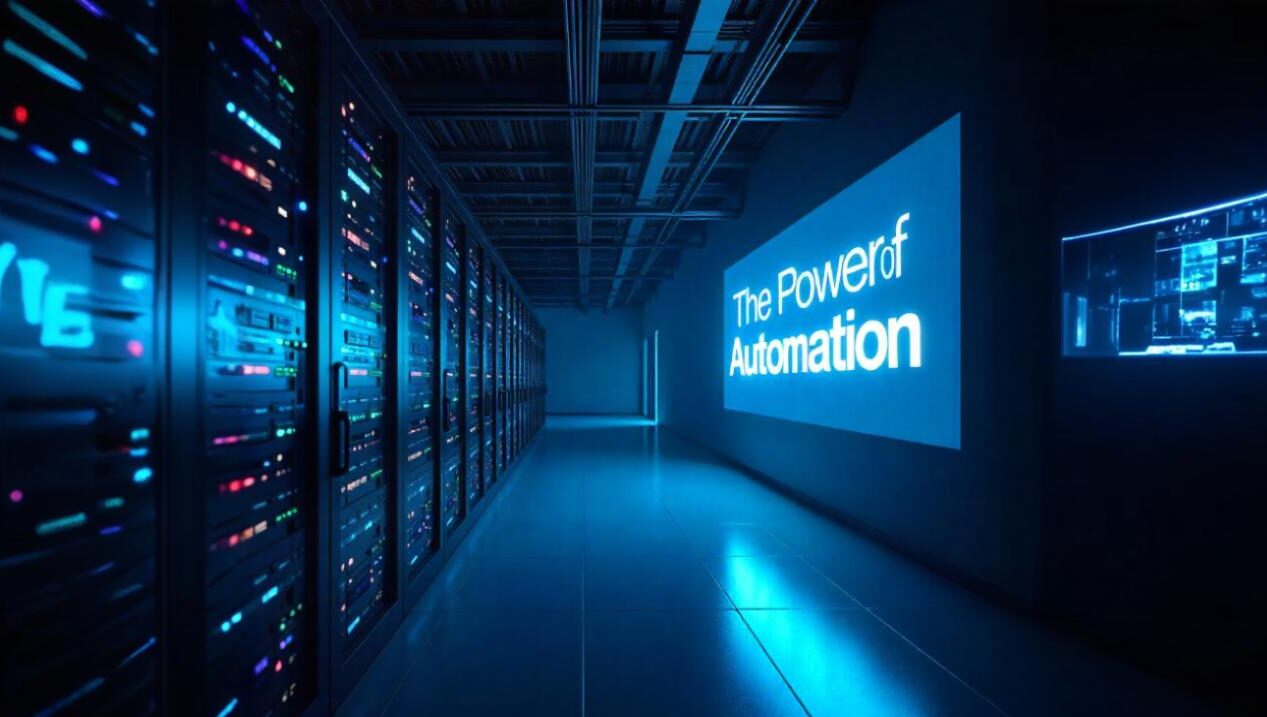The Power of Automation: Streamlining Processes and Optimizing Ad Targeting with AI-Powered Automation
Introduction:
In today’s fast-paced digital landscape, businesses must continuously seek ways to improve efficiency, reduce manual workload, and achieve better outcomes. One powerful solution lies in automation—specifically, AI-powered automation. This advanced technology is transforming how companies target audiences, allocate budgets, and boost conversions. By leveraging artificial intelligence and machine learning, businesses can automate repetitive tasks, make smarter decisions, and enhance campaign performance with minimal human input.
What Is Automation?
Automation refers to the use of technology to complete tasks without human intervention. In digital marketing, this includes streamlining operations like data collection, ad targeting, and campaign optimization. When combined with artificial intelligence, automation becomes significantly more powerful. AI-powered automation uses algorithms to analyze large datasets, recognize patterns, and make decisions in real time—allowing marketers to respond quickly and accurately to shifting consumer behavior.
Key Benefits of Automation
Automation offers a range of tangible benefits that can significantly improve business performance:
- Increased Efficiency
Automating repetitive tasks allows teams to focus on strategy, creativity, and growth. - Improved Accuracy
Algorithms reduce the likelihood of human error, ensuring consistent and precise execution. - Enhanced Scalability
Automated systems can handle large-scale operations and datasets without requiring additional resources. - Smarter Decision-Making
Real-time insights enable marketers to make informed decisions instantly.
Types of Automation in Digital Marketing
Digital marketing includes various types of automation, each addressing specific needs:
- Marketing Automation
Tools that manage email campaigns, lead nurturing, and social media scheduling. - Ad Automation
Systems that automatically manage bidding strategies, adjust creatives, and select high-performing channels. - Data Automation
Processes that clean, aggregate, and interpret large volumes of data for actionable insights.
The Manual Struggles of Pre-AI Ad Targeting
Before AI became mainstream, ad targeting was largely manual and intuition-based. Marketers had to:

- Define audiences using historical data and gut instinct
- Choose platforms and allocate budgets manually
- Wait weeks for performance data to analyze results
This reactive model often missed key opportunities. Without real-time analytics, marketers couldn’t adapt quickly, resulting in inefficient spending and subpar results.
The Rise of AI-Powered Ad Targeting
With AI-powered automation, ad targeting has become more precise and effective. By analyzing massive datasets in milliseconds, AI can:
- Pinpoint Audience Segments
Segment audiences based on location, demographics, interests, or behaviors in real time. - Optimize Ad Creatives Automatically
Test various formats and adjust visuals or messaging to maximize engagement. - Refine Ad Placement
Machine learning algorithms determine which platforms and times generate the best returns. - Maximize ROI
Continuously optimize ads to reduce waste and increase conversions, improving overall return on investment.
Best Practices for Implementing Automation
To ensure automation delivers value, businesses should follow these best practices:
- Set Clear Goals
Define measurable objectives such as higher conversions, lower costs, or better audience engagement. - Select the Right Tools
Choose automation platforms that align with your marketing needs and integrate well with existing systems. - Monitor and Adjust
Automation isn’t a “set-it-and-forget-it” solution. Ongoing monitoring helps fine-tune performance. - Train and Support Teams
Equip your team with the knowledge and support needed to work effectively with automation tools.
Common Challenges and Limitations
Despite its advantages, automation comes with a few challenges:
- Data Quality Issues
Inaccurate or incomplete data can lead to poor decisions and weak campaign results. - Loss of Human Touch
Over-automation may make interactions feel impersonal, especially in customer service. - Technical Glitches
System bugs, downtime, or poor integrations can hinder effectiveness and frustrate users.
The Future of AI-Powered Automation in Advertising
Looking ahead, automation will continue to evolve alongside emerging technologies. Key trends include:
- Conversational Ads
Interactive chatbots embedded in ad units that respond to users in real time. - AR-Powered Marketing
Personalized, immersive ads using augmented reality to engage audiences in innovative ways. - Voice Search Integration
Ads tailored to voice search queries through assistants like Alexa and Google Assistant. - Hyper-Personalization
AI-generated content customized for each user based on behavior, history, and intent—delivered instantly.
These advancements signal a shift toward smarter, more personalized, and human-centered marketing experiences.
Conclusion
AI-powered automation is reshaping how businesses operate and market. From improved efficiency to more accurate ad targeting and increased ROI, automation empowers companies to achieve more with fewer resources. By setting clear goals, selecting the right tools, and staying informed about emerging technologies, businesses can unlock the full potential of automation. Although challenges exist, the benefits far outweigh the risks—especially for early adopters who embrace this transformative shift.
Key Takeaways
- Automation enables tasks to be completed faster and more accurately.
- AI-powered systems use machine learning to analyze data and make real-time decisions.
- Major benefits include efficiency, smarter decisions, and scalability.
- Common automation types include marketing, ad, and data automation.
- Success depends on setting goals, using the right tools, continuous monitoring, and training.
FAQs
Q1: What is automation in digital marketing?
A: It’s the use of technology to complete marketing tasks automatically, streamlining workflows and improving outcomes.
Q2: What are the main benefits of automation?
A: Automation boosts efficiency, accuracy, scalability, and real-time decision-making.
Q3: What types of automation are used in marketing?
A: The primary types are marketing automation, ad automation, and data automation.
Q4: How does AI improve ad targeting?
A: AI analyzes large datasets to find patterns, personalize ads, and place them where they’re most effective.
Q5: What are key practices for successful automation?
A: Set goals, choose appropriate tools, monitor performance, and train your team.
Q6: What challenges might arise with automation?
A: Common issues include poor data quality, reduced human connection, and technical difficulties.
Q7: How can businesses measure automation success?
A: By tracking KPIs such as ROI, efficiency, campaign results, and customer engagement.
Q8: What does the future hold for automation in marketing?
A: Trends include conversational ads, AR experiences, voice-based targeting, and hyper-personalized content.
